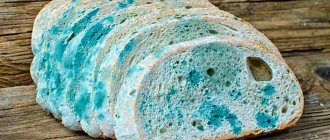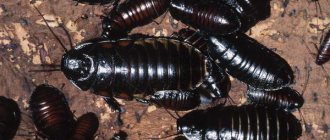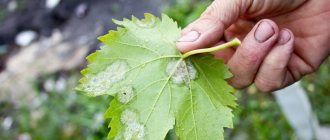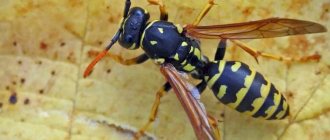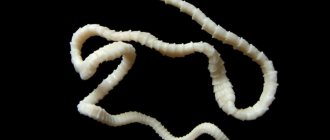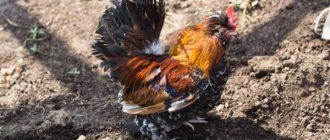The proximity of snakes on the site is unpleasant for any person. Reptiles not only cause horror to many owners of dachas and country houses, but are also extremely dangerous. A reptile bite can be a person's last if prompt assistance is not provided.
Unfavorable environmental conditions and human intrusion into the reptiles' habitat have significantly increased the risk of such encounters. It is better to prepare in advance for the appearance of dangerous neighbors. This will prevent them from invading the area or get rid of snakes that have already appeared.
Reasons for the appearance of dangerous neighbors
Any country farmstead is replete with food for reptiles. Insects, rodents, bird eggs are the favorite diet of reptiles. Snakes tend to settle in such places. They need special locations to live:
- dark places;
- compost heaps;
- haystacks;
- debris piles;
- bushes, trees, thickets of grass;
- outbuildings.
To prevent reptiles from entering the area, clean up the area. Remove trash heaps from the area. Clean the area under outbuildings and houses. Thin the bushes. Trim the trees. Snakes are afraid of the noise of a lawnmower. Mow your lawn and grass on your property more often.
The appearance of reptiles even in a clean area can be caused by undeveloped territories located in the immediate vicinity. These include:
- abandoned buildings;
- steppe and forest;
- developed territories;
- neighbors' overgrown plots.
The close proximity of the above locations promises a lot of trouble. You need to know how to deal with snakes that can visit your yard at any time. Before you take out unquestioned guests, you should study what they are most afraid of. Creeping reptiles always move away from strong odors and strong noises.
Radical ways to expel snakes
You can drive away the snake community from your summer cottage if you exterminate rodents, lizards, frogs and insects. A strong young cat can handle this, and will happily catch everything that rustles and crawls in the bushes and tall grass, including snakes. You can also get a Jagd Terrier dog. This dog is very difficult to raise and care for, but he is a real threat to amphibians.
Jagd Terrier: Enemy of Snakes No. 1
There is also a “recipe” for snakes like hedgehogs. They feed on insects and plants, but do not tolerate the presence of reptiles, mercilessly destroying them. The only thing is that hedgehogs are quite difficult to attract, and if this is successful, they need to be constantly fed.
The perimeter of the dacha, areas under the barn or house, and especially under its threshold, can be watered or laid with rags soaked in saltpeter, herbicide or other chemicals. But this can seriously harm your area and significantly reduce the comfort of your rest. Harsh chemicals have a pungent odor and, if used incorrectly, can burn out literally everything it comes into contact with, excluding the appearance of vegetation in the treatment areas for several years.
Ammonium nitrate is a powerful oxidizing agent
Snakes are terrified of high temperatures and can smell flames and a burning smell from a kilometer away. But burning grass, rubber and other petroleum-based materials in a summer cottage is a rather dangerous decision and harmful to the ecology of the area. Much less damage will be caused by hanging bells, small windmills or rattles on the site. Only the sounds they make will irritate you more, and as soon as you take them off, the snakes will come back.
Snakes make nests in compost pits, manure piles, garden debris, or inside old rotten tree stumps. If you find one, do not try to destroy the snake’s lair yourself - let professionals who are well prepared to deal with poisonous representatives of the snake kingdom do this.
Methods of fighting snakes
There are a sufficient number of ways to scare away or drive out reptiles. Each of them is effective. The choice of the optimal option depends on the capabilities and preferences of the owner of the site.
Means of fighting snakes:
- chemical substances;
- biological drugs;
- pets and hedgehogs;
- traps, snake repellers;
- folk remedies.
Control measures are most effective when the owner of the site puts it in proper order and maintains cleanliness.
What to do if bitten by a snake - first aid
A snake will never be the first to attack you; it will hiss in advance and try to crawl to the side. But if you step on it or accidentally touch it, it will make a lightning-fast attack and bite. Sometimes people do not notice the moment of the bite, only a moment later they see the snake crawling away from them. Most often, bites occur on the arms or legs. Bites to the neck and head are life-threatening.
Viper venom contains a cytotoxin that attacks the nervous system. Other poisonous substances cause blood clotting disorders and contribute to tissue death.
Bite symptoms
Two small puncture wounds remain on the skin where the snake bit. If the bite is from the side or the viper has one poison-conducting tooth, one puncture remains.
Immediately after the bite, intensely increasing severe pain is noted. Immediately the skin in this area turns red and swells. The swelling spreads quickly upward from the wound. Symptoms of general intoxication do not appear immediately, about half an hour after the bite. Weakness, dizziness, headache, nausea and vomiting gradually develop. Tachycardia, shortness of breath, a state of lethargy develop, blood pressure drops, and the temperature may rise. Possible fainting. In the first three days, blisters and hemorrhages in the skin and mucous membranes appear on the skin.
In severe cases, there is excitement followed by lethargy, heart rhythm is disturbed, breathing is difficult, and bleeding occurs. And as complications, seizures, changes in liver and kidney functions. The development of complications depends
- from the site of the bite,
- the size of a reptile
- height and weight of the victim,
- state of health at the time of the bite of the victim.
Consequences of a snake bite
Deaths from viper bites are rare, no more often than from bee stings. However, being its victim is quite unpleasant and painful. Moreover, if the poison immediately enters the bloodstream, the symptoms develop very quickly, and the consequences in this case are more serious.
First aid not provided on time can subsequently cause complications from the cardiovascular system and other organs.
How to give first aid
- First of all, calm down or reassure the victim - everything has already happened;
- Squeeze the blood out of the wound; along with it, the poison that has not yet been absorbed may come out. Sucking poison from a wound with your mouth is a rather controversial action. However, if there are no wounds in the oral cavity, then no later than 10–15 minutes after the bite, the blood along with the remaining poison is sucked out from the wound and spat out. Even if a small amount of poison enters the stomach, it is neutralized under the influence of hydrochloric acid.
- Treat the wound with any disinfectant except vodka and alcohol;
- To prevent the poison from spreading further through the circulatory system, try to move less. For this purpose, lay the victim down, limit any movements in the limb;
- If possible, to slow down the absorption of the poison, place any cold object on the wound;
- Give the victim more of any warm liquid;
- Get the victim out of the forest as quickly as possible, or call an ambulance right away. Introducing anti-snake serum as early as possible will help avoid serious complications, and recovery will be faster
Good luck to you and stay healthy!
Chemical substances
The use of such products is most often used in cases of excessive reproduction of reptiles in the local area. The substances are poisonous and therefore dangerous not only for reptiles. People, pets, and beneficial inhabitants of the site may suffer from their effects. The use of drugs also has an adverse effect on the environment.
When choosing a chemical method for killing reptiles, it is worth studying this issue in detail. The drugs have different effects. Universal substances are designed for long-term operation. Specialized ones are used for certain types of snakes. These factors must be taken into account. Chemical preparations are practically never found on the open market. You can order them only on foreign websites.
Snake in a summer cottage: evil or good?
The presence of reptiles in a garden or vegetable garden should not be perceived as a universal catastrophe. Firstly, most snakes are quite harmless to humans and, moreover, successfully avoid encounters with them. Secondly, reptiles actively destroy numerous pests (voles, shrews, rats), expel moles from their holes, and feed on lizards, large insects, slugs and snails.
Some summer residents try to get rid of snakes as quickly as possible, accusing them of eating strawberries in the garden beds (although snakes are more attracted to protein foods). But their presence will protect the area from the appearance of more dangerous reptiles - vipers, food competitors of snakes. Therefore, you should not grab a shovel and indiscriminately destroy all the snakes you encounter.
It is mandatory to remove reptile neighbors in cases where:
- their number is too large;
- there are small children in the family who may be harmed;
- one of the family members suffers from herpetophobia - a panicky and uncontrollable fear of snakes.
Biological drugs
One of the methods of repelling snakes is the use of biological substances. The drugs are available in the following forms:
- powders;
- liquids;
- granules.
The substances repel reptiles from the area. They contain only natural ingredients. The aromas emitted by biological preparations are unpleasant to snakes. Reptiles, sensing their scent, leave the area treated with bio-components.
One such product is “Snake Repellent OPC”. The bio-repellent releases vapors of essential oils into the air. To spray the area, you need to prepare a working solution: dissolve 100 ml of the product in 1 liter of water. Then spray the areas where snakes are likely to live. One bottle of “Snake Repellent OPC” is enough to treat 150 linear meters (500 m²).
Homemade and Natural Snake Repellents
You can scare away a snake with the help of folk repellents, which include fox urine, smoking smoke, diesel fuel and a mixture of mothballs with cat litter, lime and pepper-based sprays. But some scientists argue that all these remedies are ineffective. And experts also call diesel fuel very harmful to the environment: your green spaces and beneficial insects in the garden will not be happy with it. Although some researchers from America talk about its restrictive effect on rattlesnakes.
What about repellents made from natural essential oils? Such mixtures are common for controlling parasites in the garden, but nothing effective has yet been created against snakes.
How effective are snake repellents?
Let's start with the facts: Some scientists radically claim that all chemical repellents are ineffective against snakes. Perhaps this is due to the olfactory system of reptiles, because snakes sense odors using a forked tongue. This means that scents do not scare them away from a distance! And even with physical contact, she will feel it only if she touches the ground with her tongue.
What you definitely shouldn’t buy are products that position themselves as universal: like they are against spiders, and against snakes, and against rats... Many biologists are sure that these drugs are the worst. And don’t consider options with ultrasonic repellers. After all, snakes don’t have ears!
But still, popular snake repellers - powders and granules based on sulfur and naphthalene - aroused some interest in us. Experts are divided on them, so let's consider them as potential snake repellers! And a little later we will find out what ordinary users think about such repellents.
Pets and hedgehogs
Dogs, cats and birds can engage in combat with snakes. All of them are not protected from reptile poison. The Scottish Terrier, bred to hunt rodents and reptiles, bravely enters into battle with a creeping reptile. Turkeys are not averse to eating a small snake. Pigs are not afraid of poisonous bites. A thick layer of fat provides reliable protection. They trample the snake, tired of the attack, with their feet.
Hedgehogs were chosen by nature to control the reptile population. Immunity to poisons allows the animal to engage in battle with the reptile. Having defeated the snake, the hedgehogs eat the prey. Many land owners introduce these animals by presenting them with a saucer of milk. One hedgehog is enough to destroy even an entire population of small snakes. The small predator will clear the local area, garden and small pests.
Unusual ways
On the Internet you can find very interesting methods, which, nevertheless, in some cases had the desired effect.
- The natural enemies of snakes are hedgehogs, which hunt reptiles quite actively. Some people advise introducing hedgehogs to the area. To do this, every night they need to leave a treat - a plate of milk and pieces of raw chicken. And a completely extreme method of fighting is the “drunk hedgehog”. It has actually been used since medieval times in Hungarian territory. Hedgehogs should be treated to beer or wine instead of milk. A supposedly drunk hedgehog is especially ferocious. But we would not recommend experimenting like this;
- Cats or dogs, especially the Jagdterrier breed, are quite successful at hunting snakes. This method is not recommended if your pet does not have the appropriate character and does not demonstrate hunting skills;
- The smell of some plants, particularly garlic, can repel snakes. You can plant a plant around the perimeter of the site;
- mustard powder has a similar effect
- Install homemade ones around the perimeter of the site turntables, which will create vibration and transmit it to the ground. If you have a lawn on your property, trim it regularly with a lawnmower to discourage reptiles.
If none of the methods helped you , you can always call herpetologists - these are people who specialize in catching snakes.
Traps
In the fight against snakes, special designs are also used:
- cells;
- metal fences;
- glue traps.
Special cages are made from fine-mesh steel mesh. Inside them there are containers with bait that attracts snakes: milk, special liquids. Reptiles crawl into them and I can’t get out.
Fencing areas with fine mesh wire mesh is also an effective way to control snakes. Such a fence will not allow reptiles to enter the territory. Glue traps are also used for catching reptiles. Once on a special platform, the snake sticks tightly to it.
Repellents
Repellents have proven themselves in the fight against rodents and insects, but with snakes everything is a little different.
The strong-smelling active ingredients of the drug should repel uninvited guests.
But considering that the tongue is the organ of smell in snakes, whether the repellent affects it or not is a matter of chance. If the snake touches the substance with its tongue, it will leave; if not, it will crawl over it and go in the direction it needs. If you decide to try this method, choose from the following repellents:
- "Dr. T's 4-Pound Nature Products Snake Repelling Granules" . The drug is in the form of granules, the active substances of which are sulfur (28%) and naphthalene (7%). Some summer residents use these two components independently, scattering them around the site. However, this is not as effective. The manufacturer recommends scattering the granules in paths. If you are fighting snakes, the width of the paths should be 10-12 cm, if you are fighting rattlesnakes - 20-30 cm. After each precipitation, you need to re-pour the granules;
- "Havahart 6400 Snake Shield Snake Repillent". The active component of the drug is sulfur and essential oils of pine nuts, cinnamon, and cloves. It is recommended to scatter it along the perimeter of the site, around compost heaps, sheds, firewood sheds in paths 20 cm wide;
- "Sweeney's 5200 All Out Snak Repillent, Granular, 4-Pound" . A product with a completely natural composition based on clove, cedar and cinnamon oils. According to reviews, this repellent in most cases helped repel garden snakes, black snakes and copperheads.
When using repellents, not under any circumstances surround burrows and areas where snakes are concentrated with the substance. By creating such a repellent ring, you will only achieve that they will not be able to leave their habitat. Do not use them indoors and be careful that the granules do not fall into the hands of a child.
Specialized snake repellers
Reptiles are earless animals and perceive sound waves as vibrations. There are frequencies that are unbearable for snakes, so they leave the area. The design of the devices is simple. Most of the repellers are metal or plastic. The products have a cylindrical body with a “sharp leg” stuck into the ground.
According to experts, 2-3 days are enough to get rid of snakes. Leaving the device on all the time is irrational. The main advantages of such devices:
- highly effective;
- safe;
- easy to use;
- wide-radius action.
If there are obstacles (buildings, fences) in the area where the device is working, the R action is reduced. This is the only disadvantage of such devices.
Types of repellers
Experts recommend installing several types of devices in home areas. Based on the type of vibration waves generated to repel reptiles, devices are divided into the following groups:
- vibration;
- acoustic;
- ultrasonic.
Vibration devices are a micro-motor installed in a cylindrical casing. Reptiles instinctively sense earthquakes, landslides, and volcanic eruptions from soil tremors and leave dangerous areas.
Acoustic devices are created on the principle of sound transmission. A mini-player built into the case transmits special sounds and signals. Acoustic waves cause vibrations in the ground that are unpleasant for snakes. Reptiles leave a place that is not suitable for them. The downside of such repellers is the negative impact on others: pets, people.
Ultrasonic devices emit a frequency that is not perceptible to humans. Such repellers create vibrations when working on the ground surface. The frequency range in ultrasonic devices is uncomfortable for snakes, so they leave the area unfavorable for them.
When choosing repellers, you should pay attention to the technical parameters of the devices. Experts recommend autonomous models with a reliable body and maximum impact radius.
Which snakes are dangerous to humans?
In early and mid-summer, which is the period of greatest human activity on the site, reptiles become very dangerous. In time, this period coincides with the mating season for reptiles, so their irritability sometimes turns into aggression towards humans.
Not all snakes are poisonous. Snakes, snakes and vipers are more common in central Russia. Of these, only the viper is poisonous. They differ from each other in coloring. This is what they look like in the photo.
Snakes are black or yellow in color, cowardly, but in case of danger they can take a stance and throw themselves at their feet.
snake is the most common. They do not like wet places and prefer to live in dry hay or burrows. They are very aggressive and can jump up to 1 meter away.
Vipers are deadly dangerous creatures. They are black with a gray pattern on the back. It is better to get rid of such snakes in a radical way.
Folk remedies
Practice-tested means at hand will help scare away reptiles that are present or trying to enter the area. Property owners hang bells on trees. The slightest breath of wind causes a chime that is unpleasant for reptiles, forcing the asps to crawl away.
Reptiles are also afraid of the sound of frequently running generators and lawn mowers. Excessive music and loud conversation can help drive them out of the area. A bed of garlic planted along the perimeter of the fence will prevent dangerous neighbors from entering the territory of a country house. Reptiles cannot tolerate the smell of this plant.
When choosing a method for eradicating creeping reptiles from an area, you should decide on the goal: scaring away or exterminating.
The main folk methods of eradicating reptiles:
- Snakes are sensitive to aromas, so you can scatter mustard, 1 kg x 10 acres.
- Burning rubber tubes produces an unpleasant odor that adders do not like.
- Snakes are repelled by mothballs, saltpeter, and herbicides scattered throughout the area.
- Adders don’t like diesel fuel either. You can scatter rags soaked in it around the area
- If reptiles are deprived of food, they will leave the area on their own.
When choosing an aggressive method of repelling reptiles, you should take care of your pets and children. Chemicals and other substances that are unsafe for humans should be placed on the premises with caution. You also need to take into account that powders, granules and liquids will stop working after the first rain.
We also recently wrote about how to protect yourself from rodents and mice on your property. Read here >>
Snakes in the garden: an invisible danger
A snake attacks a person only in two cases - if it is frightened or provoked. However, this does not make things any calmer. Not all adults, having heard a suspicious rustling in the bushes next to their bare feet, are able to quickly cope with the rush of adrenaline, allowing the snake to crawl on its way. If we are talking about children, then their meeting with any of the representatives of this species is extremely undesirable. After all, fright can cause a child to suffer serious mental trauma, not to mention the deadly danger of a snake bite for a child’s body.
Viper warning color
Reptiles are predominantly nocturnal, which complicates their detection and identification. However, the presence of snakes in the area is always noticeable to an experienced eye. Their main food is rodents, which are found all over the place. Therefore, if no one eats the garden crops you planted, there are no hedgehogs in the vicinity of your dacha, and you yourself do not have a cat or dog, most likely there are snakes on your site. They live in burrows, which they prefer to dig in swampy, shaded vegetation and therefore always cool and slightly moist soil. In addition, snakes periodically shed their skin. Its remains, which are called “creeps,” can be found in their habitats and migration areas - in thick grass, bushes, near reservoirs and rivers, in areas with high soil moisture, etc.
Snake crawl
The most dangerous time in terms of encounters with the snake brethren is early to mid-summer. It is then that the breeding season begins for most species that are found in our country, and they themselves become very irritable.
How to protect yourself from snakes: snake traps and homemade fencing
Physical control measures against snakes may be more effective. They say that the best means of protection against creeping reptiles is a solid fence dug into the ground. In addition, different types of reptile traps are popular. Getting them is not that difficult.
- Snake fence
We have read a universal recipe for making a fence:
“Make a fence from galvanized mesh (mesh mesh is 6 mm), the height of the fence should be about 80 cm. Bury the lower part of the fence 7-15 cm into the ground, placing the posts inside the fence so that snakes do not crawl on them. You can build this fence alone or add it to an existing fence. Any gate must be tightly closed and without gaps. Inspect the fence regularly to make sure that there are no passages under it and that there are no foreign objects on the outside. Mow the grass and weeds around the fence and remember to keep the snake fence angled outward at a 30-degree angle.”
- Homemade snake trap
Experts favor the use of sticky traps to deter snakes. They do not kill the animal, but simply deprive it of the ability to move. Such traps are on sale. And the recipe for a homemade trap is described by zoologists from Washington:
“Place a sticky glue trap along an interior wall or foundation (based on the amount of sticky “pad” needed to catch a rat). Use plywood as a base for it. To avoid close contact with a frightened snake, you should have a special tool with a wooden handle and a hook at the end. To free a trapped snake, pour a little vegetable oil directly onto it - the oil will make the glue less sticky and allow the snake to crawl away."
- Pets
They can also be classified as methods of physical influence. Pigs, dogs and hedgehogs are thought to eat some species of creeping reptiles. But only the hedgehog does this with sufficient regularity. The rest, if they try a snake, will only do so if they are very hungry. You don't want to starve your pets, do you? And these favorites do not always emerge victorious from a battle with poisonous snakes. Therefore, we immediately discard this method.
Why are dogs not afraid of poisonous snakes?
Most people avoid contact with snakes. Perhaps this instinctive antipathy is an evolutionary relic of the past, designed to protect us from being bitten. Dogs, to the chagrin of their owners, often approach all snakes without any fear and are bitten by vipers or rattlesnakes. Researchers from Michelle Mulholland's team (California State University) determined that the driving force behind this craving in dogs is curiosity, and, as the experiment showed, they are more attracted to the smell of poisonous snakes.
In the study, ethologists observed 117 domestic dogs approach and sniff four different odor patterns. Before doing this, the experimenters placed a mouse, a slug, a rattlesnake and a non-venomous boa constrictor on pieces of newspaper until their scent was absorbed into the paper. The dogs were most attracted to the mouse smell. When comparing their interest in the rattlesnake and the boa, the venomous reptile came out on top. The dogs were least attracted to the smell of slug.
To find out whether the animals were afraid when sniffing, the scientists recorded which nostril the dogs tested the smell. Animals are known to sniff dangerous substances through their right nostrils. However, both dogs participated in the experiment, therefore, they had no fear.
From an evolutionary biology perspective, the results are puzzling. Why don’t dogs have an innate fear of snakes, although their bites regularly result in death for four-legged “researchers”? Dogs and their wild ancestors have been in contact with venomous snakes for a long time - during such time this protective instinct should have taken hold. Perhaps it was lost in dogs during thousands of years of breeding?
An experiment with wolves could help clarify these questions. If they are not afraid of snakes, then perhaps reptiles do not pose much of a threat to them. In addition, a snake may be less likely to bite a wild wolf than a playful dog excited by the encounter.
An alternative answer can be found in the snakes themselves: these hunters are not interested in giving away their scent to their prey or predators. Therefore, they can mask that part of it that will serve as a warning to other animals. Such chemical camouflage has already been proven in African vipers.


